Conservation Drainage
Throughout Illinois and other parts of the Midwest, farmers are increasingly investing in tile drainage systems to improve productivity and trafficability of their fields. Conservation drainage practices such as bioreactors, controlled drainage systems, saturated buffers, and constructed wetlands, are designed to capture and treat drainage from tile outlets, providing effective and often long-term nutrient loss reduction benefits.
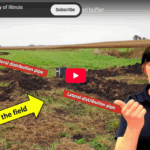
University of Illinois Saturated Buffer
A grassed buffer between a field and a stream provides important benefits to the environment but underground a tile pipe can send nitrogen straight to the stream. Dr. Laura Christianson of the University of Illinois talks about how we can modify grassed buffers to remove nitrogen from the tile drainage water before sending the water downstream.
Watch Video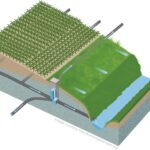
Transforming Drainage: Saturated Buffers
The Transforming Drainage project brings together research from experimental saturated buffer sites across the U.S. Midwest to evaluate the full potential of this new and exciting practice, and develop tools and resources that will help farmers, drainage contractors, conservation staff, and others locate, design, and install saturated buffers within tile-drained landscapes.
View Website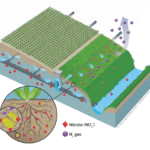
University of Illinois Extension: “Buffing Up” Water Quality
This saturated buffer fact sheet outlines the benefits of this practice and lists several considerations and requirements of installment.
View Website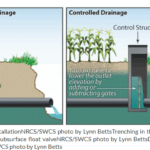
ADMC Controlled Drainage Fact Sheet
This ADMC webpage provides information on controlled drainage, also referred to as drainage water management, including considerations for installation and financial impacts.
View Website
NRCS Bioreactor Video
In the summer of 2017, the Peoria County Soil and Water Conservation District (SWCD), the USDA Natural Resources Conservation Service (NRCS) and Illinois Farm Bureau teamed up with a forward-thinking landowner to plan, design, and install a relatively new conservation drainage practice so that folks could see what the denitrifying bioreactor looks like and how it’s built. Check out this video and see if it’s something that would fit on your land!
Watch Video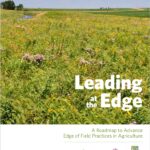
TNC Edge of Field Roadmap
“Leading at the Edge: A Roadmap to Advance Edge of Field Practices in Agriculture” – This Roadmap outlines the path to successfully achieve the scale of action needed to realize widespread water and wildlife benefits. Developed through a months-long collaborative effort, the Roadmap charts actionable steps and describes the necessary tools to help the food and agriculture sector transform U.S. working landscapes and achieve its conservation goals.
Download Documents